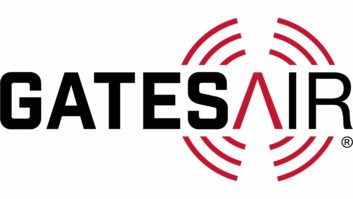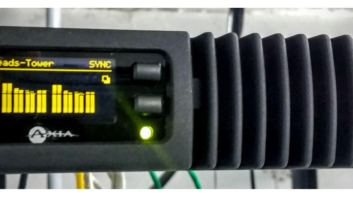CINCINNATI —There is no question that IP has become the way of the world. In broadcasting, IP connectivity has become more commonplace for a variety of business and technical reasons. Looking specifically at radio, IP establishes a more efficient means of moving multichannel content around a studio facility and addresses the need for additional spectrum and data transport functionality to and within RF plants.

At Radio One, we use a variety of IP codecs, favoring certain models for certain applications. When it comes to robust, “nailed up” point-to-point connections and flexible multipoint contribution and distribution, the GatesAir IP Link codec family has become my favorite goto.
GO-TO SOLUTION
The IP Link is a part of the long-established GatesAir Intraplex range, which has a reputation for reliability in STL transport across microwave and T1. The IP Link continues that tradition of a transport platform that can be counted on: It’s a solid, bidirectional device that is compact and easy to use, the former being especially helpful even the limited real estate in many equipment rooms and transmitter sites. The IP Link is deployed in a number of Radio One markets including Washington, Atlanta, Cincinnati and others.

The deployment strategy and model selection differ site by site. We employ a mix of IP Link 100 and IP Link 200 models for point-to-point STL applications, and, depending on each site’s transport architecture, the codecs are used as either primary or backup links. Often, we will configure the IP Link as our primary path through an IP-based microwave link, and sometimes telco-based IP paths to a transmitter site.
Elsewhere, the IP Link serves as a reliable secondary path for a 950 MHz fixed microwave link or T1 circuit. In the case of the latter, we expect this strategy to evolve more toward IP as a primary transport method as many telco providers are getting away from supplying TDM-based services.
MULTIPOINT
For multipoint networking, we have found that the IP Link is a reliable and lower-cost alternative for distribution of syndicated content. We use a considerable number of IP Link 100 and 200 codecs to pass audio originating from various markets to our satellite providers uplink. GatesAir provides an IP Link scheduler that manages the switching of streams that need to point to various destinations at various times.
A great feature of both models is the use of forward error correction to compensate for network jitter and dropped packets, which makes artifacts virtually unnoticeable to listeners. Also, the firing of a closure on the far end of an IP Link is extremely reliable due to embedded logic which is time-aligned to the program source. This is a must-have for our syndication network.
The IP Link 200 is the more featurerich version, adding a second bidirectional stereo stream. Both offer webbased GUIs for codec management and signal monitoring, but the 200 adds frontpanel confidence monitoring LED VU meters. I appreciate the ability to visualize activity indicators on the front panel.
Both codecs otherwise offer a diverse feature set. We appreciate its support for transport of multiple audio codec formats over the same network. The IP Link offers plenty of user control, flexibility and configurability and has been proven reliable. It has filled our needs and has lived up to the Intraplex name.
We will typically configure the IP Link to operate in linear mode on our MPLS (our internal private network) and/or a microwave environment. However, in situations with bandwidth limitations, we will configure the IP Links to take advantage of built-in AAC+ or another algorithm to preserve bandwidth.
We have additionally integrated GatesAir’s Dynamic Stream Splicing application to several of our IP Link paths, which can send multiple identical streams over the same connection, or two different paths, to borrow data from each other in compensation for packet loss. Our initial thought was that we could use this service with an unlicensed microwave link or with a DSL where the link could take occasional hits. However, to date we have not had to take advantage of this option.
I’d like to add that GatesAir has always been reliable from a service and support standpoint, whether for their IP or legacy STL systems; or for their transmitters and studio equipment. I can’t speak highly enough of their products and staff.
For more information on GatesAir, contact Keith Adams in Ohio at (513) 459-3447 or visit www.gatesair.com.










